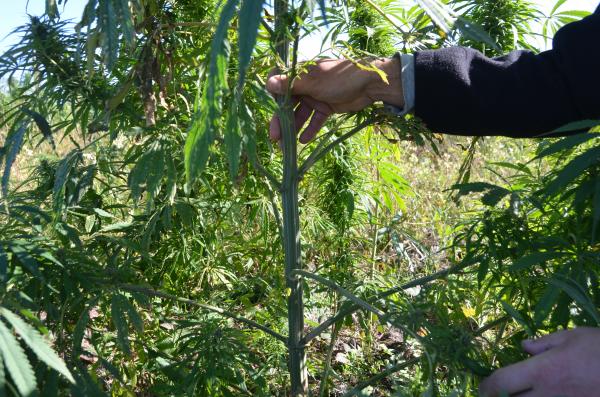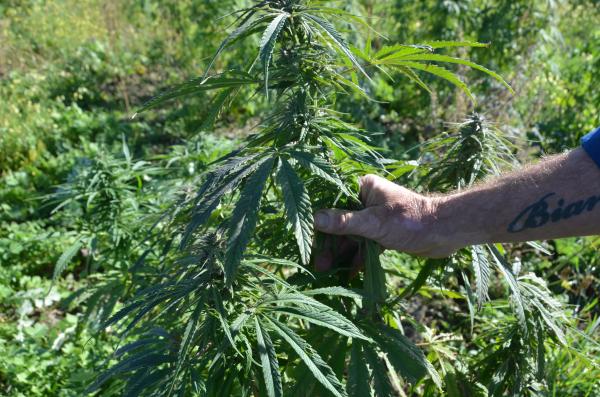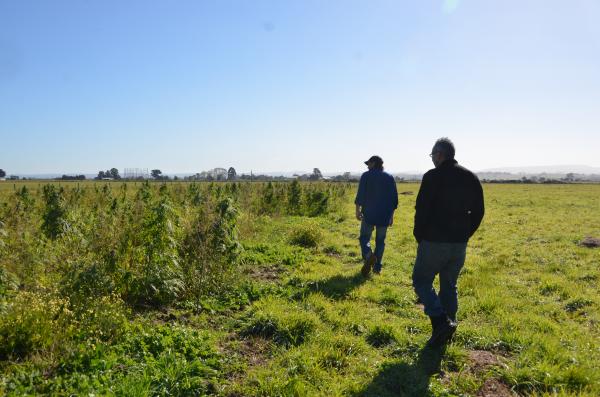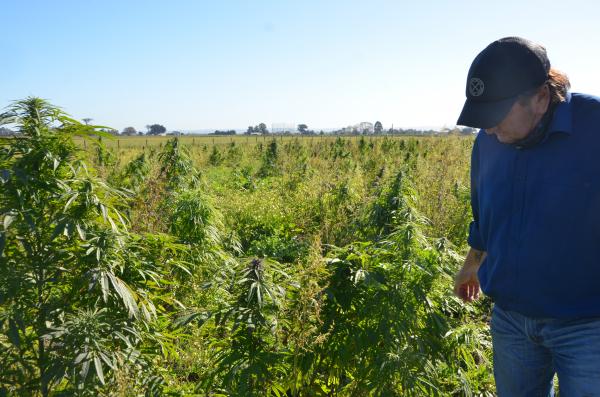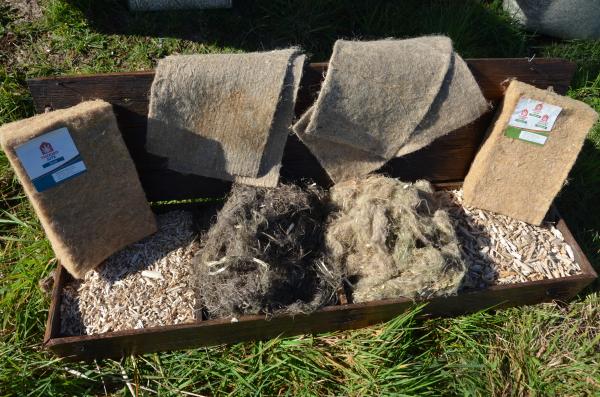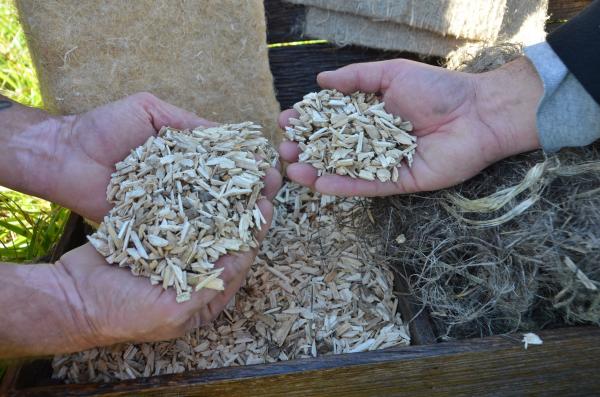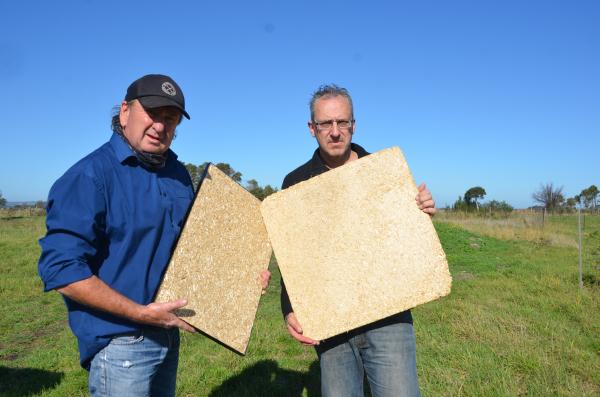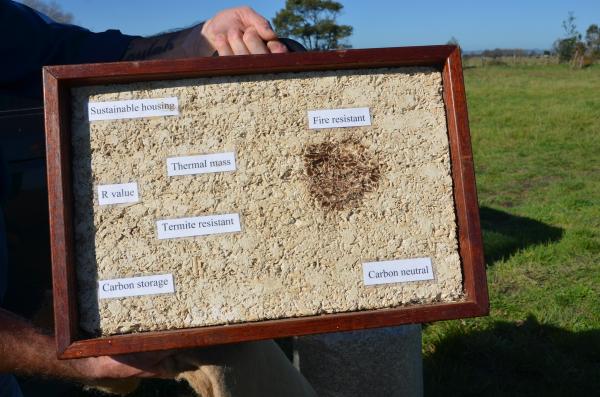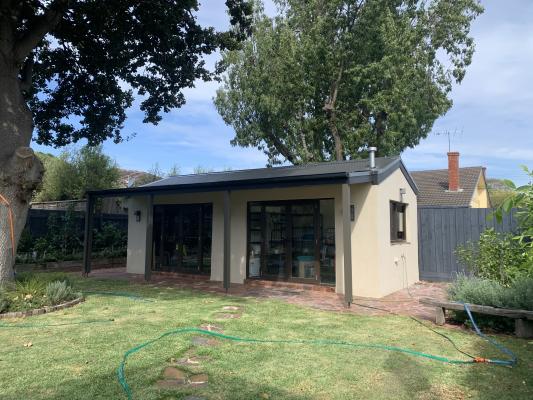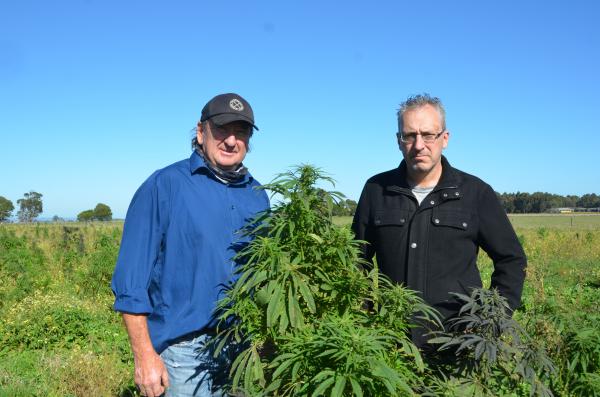
For centuries, builders around the world have used products like timber, concrete, bricks and mortar to construct homes and buildings – but a new, unlikely medium is taking the construction world by storm and paving the way to a sustainable future. GABRIELLA PAYNE visited a farm in Vervale to learn about the endless possibilities that hempcrete has to offer the building industry.
More often than not, when you think of hemp, you think of cannabis.
Unlike its illicit cousin though, hemp or ‘industrial hemp’ is a variety of the cannabis plant that is used exactly how the name portrays it – for industrial purposes only.
One of the fastest growing plants on Earth, hemp can be used to make a wide range of products and is quickly emerging as the go-to for modern, sustainable construction, as local builder and Vervale farm owner, Andrew Little knows.
“In an ideal world, we’re trying to become the first fully-organic hemp growing farm (in Australia),” Mr Little said, as he showed me around his Vervale property.
It may not look like much right now, but the beautiful spot of land nestled in a rural corner of the Cardinia Shire is a prime spot for this emerging industrial crop – and by the looks of his test plants, it’s plain to see.
The hemp plants, which Mr Little is fully licenced to grow and contain minimal levels of THC, look lush in the sunshine and are clearly thriving in this soil and surrounding landscape.
“It started off as a bit of a joke as there’s always that stigmatism that comes with hemp,” Mr Little said as he reflected on how this journey began for him and his family.
However the more he and his wife (a sustainability teacher) looked into it, the more they couldn’t believe the benefits and potential this product had to offer.
“Knowing what I know about building and then having started researching, it went from a bit of a joke to jeepers, this is it! It was nearly a bit too good to be true,” he said.
Having worked on hundreds of builds over his years as a carpenter and with an interest in sustainability, Mr Little said hempcrete was simply “the way of the future” and was set to take the building world by storm.
“It’s an alternative wall cladding,” Mr Little explained.
“Essentially it’s the centre of the stalk processed into smaller chips and then it’s mixed with a lime based binder, and then it’s pressed and form worked into the wall.”
Mr Little explained that hempcrete was paving the way for the “next generation” of sustainable buildings as people and governing bodies began to turn their heads towards the amount of carbon being emitted into the atmosphere in order to deliver building products like bricks and timber.
“The way that hemp sequesters carbon, in its growing phase but then even in its second phase when it’s actually in your wall in your house – you can get pretty close to net carbon zero by simply replacing the bricks on your house with hempcrete,” he said.
The president of iHemp Victoria, Darren Christie, is a pioneer in the industrial hemp movement here in Australia and echoed Mr Little’s views on the farm that day, stating that hempcrete and the environmental benefits it produced were “mind blowing”.
“If we get rid of those petrol based, chemical based products which are environmentally hazardous – that’s where we can go with this crop, because the building products we can get out of this are mind blowing,” Mr Christie said.
“Hemp is a perfect rotation crop for soil regeneration on farming land.
“We’ve got 284 hectares in Victoria growing as we speak, we’ve got 1,000 in Tassie, probably about 150 in WA, 200 in Queensland… so there’s a lot going on.
The industry is growing and coming alive,” he said – but it hasn’t been all smooth sailing for Mr Little.
Despite doing his “due diligence” for months before and being licenced to grow his crop by the government – Mr Little has faced a number of setbacks in getting his farm up and running due to a few issues with planners from the Cardinia Shire Council.
“To say it’s been a bumpy process is an understatement,” he said.
Mr Little had hoped to build a caretaker’s house and a processing shed on his land, which currently has no building other than a shipping container on it, in order to help manage the crop and process it once it was ready to be harvested – but since February 2020, he has been in a constant battle with the council and is now taking them to VCAT over the matter.
“One of the biggest benefits with hemp is the carbon footprint advantage, so processing the crop on site by bringing it into a shed and then sending it down the path – that’s our overarching plan,” he said.
“We have the ability to operate all the machinery 100% off grid with three phase power, grow the crop here, process it, distribute it to Melbourne markets because we’re right on the fringe with a low embodied carbon rate but the council are against it.“
Mr Little said he understood that “our farm is a little bit different“, but having gone through all the correct processes with council planners for 13 months before the proposal was taken to council, he was confused as to why their farm was being so adamantly opposed.
“They can turn around and come to us and we can sit in a room and work out a resolution to this, but they want to go to VCAT,“ Mr Little said.
“We’re a family small business, it’s not like we’re a tier one developer.
We’re just trying to start a new alternative farming business and do something that’s really, really good for the environment,“ he said.
Mr Little said that he and his wife would continue to advocate for their hemp farm and hoped to see it come alive in the near future.

